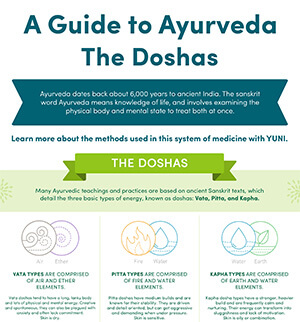Recent Posts
A Guide to Ayurveda | Part 1
Posted by on
Ayurvedic Body Types and Doshas
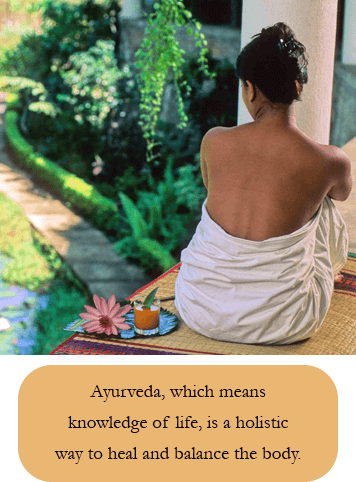
At YUNI, we love teaching and learning about the history and origins of the things that inspire us. As yogis, Ayurveda is a large part of our practice. If you’re curious about how Ayurveda relates to yoga, aromatherapy, and health, read on to learn more about this ancient system of medicine through YUNI.
What Is Ayurveda?
Ayurveda, which means knowledge of life, is a holistic way to heal and balance the body. The science of Ayurveda involves examining the physical body, as well as the emotional and mental state, to make a connection between them.
The History of Ayurveda
The origins of Ayurveda date back to roughly 5,000-6,000 years ago, when monks in India began looking at ways to improve health and wellbeing. These ancient monks believed that your physical and mental health would aid in meditation practice and spiritual development. The study of Ayurvedic medicine includes thousands of years of observations, advice, and holistic methods used for healing.
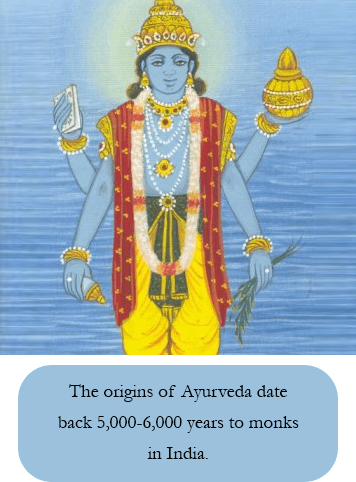
Many Ayurvedic teachings and practices are based on ancient Sanskrit texts, which detail the three basic types of energy, known as doshas. These three Ayurvedic body types are Vata, Pitta and Kapha. Today, many people visit a doctor or clinic if they are feeling sick or unwell. For thousands of years in India, many would visit an Ayurvedic doctor, who would prescribe changes in diet, meditation, and yoga to help people get back into balance and improve their overall health. Ayurvedic knowledge has also impacted Chinese medicine, Buddhist philosophy, and herbology over the years.
The Three Doshas
One of the main tenets of Ayurveda is the philosophy that every person is made up a combination of three different life sources or energies, known as doshas. Most people tend to have an abundance of one or

two of these energies, which is seen as your personal blueprint that makes up your own unique nature or constitution. These metaphysical elements impact your physical body as well.
When considering the physical aspects of Ayurveda, everything revolves around your Ayurvedic body type, also known as your dosha type. As an integral part of the healing and balancing process, learning about your dosha can help you stay healthy and tap into your intuition. Here are the characteristics of the three dosha types, which can help you figure out which one is your predominant condition or nature:
Vata Dosha
Many people refer to the Vata dosha as wind energy, as Vata is mainly comprised of air and space elements. In addition to being linked to creativity and flexibility, Vata is all about movement in the body, like the flow of your breath, your pulse and heart rate, how your muscles, tissues, and cells move throughout the body, and the connection between your mind and your nervous system. People who are considered a Vata type tend to have a long, lanky body and lots of physical and mental energy. Vata dosha types love traveling, meeting new people, having new experiences and are often very imaginative. When Vata types are out of balance, they can feel anxious, ungrounded, and have trouble sticking to commitments or a set schedule.
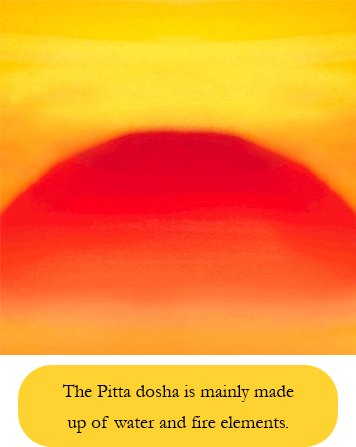
Vata Ayurvedic body types like warm, even humid, weather and get cold easily. After a long, chaotic day, Vata types can soothe their nerves and hydrate their dry skin with YUNI’s Wind-Down Wonder Warming Body Oil. People with an abundance of this type of dosha might have trouble eating and sleeping regularly. Like the air itself, Vata types can have ever-changing energy levels, moods and appetites.
Pitta Dosha
The Pitta dosha is mainly made up of water and fire elements, resulting in qualities that can be hot, sharp, light, oily, and subtle — all at once. Like fire and water, Pitta isn’t all about movement, or all about stability. Rather, Pitta energy spreads, in the same way a fire does or a body of water flows or changes direction. Characteristics of this dosha include intelligence, understanding, and transformation. Pitta energy also deals with nutrition, metabolism, and body temperature.
Because their condition is driven by the element of fire, Pitta dosha types tend to be strong, intense, and get irritated easily. Pitta types can also be focused, good with organization, assertive, confident, self-starters, and enjoy challenging themselves. When out of balance, Pitta types can also be aggressive, demanding, pushy, or get angry when they are under stress.

Pitta types are a passionate and romantic bunch, who can make good leaders as long as they don’t go too far with their authoritative nature. This Ayurvedic body type is generally athletic and fit, but sweats a lot and doesn’t like hot weather. Pitta types would benefit from our Rise & Chill Cooling Body Gel, which cools the body and eases post-workout soreness and inflammation.
Kapha Dosha
Kapha energy is primarily made up of water and earth elements. Kapha energy can be heavy, slow, cool, smooth, soft, stable, and dense. Kapha is all about structure and solidity. The Kapha energy force also hydrates all cells and systems in the body. Kapha moisturizes the skin, protects joints and tissues, and helps the body maintain immunity. Due to its connection to water and earth, Kapha is also associated with love and compassion.
Kapha Ayurvedic body types tend to have a strong frame or a well-developed body. However, Kapha types can carry extra weight, which is something they need to be mindful of. Kapha types have an easy-going, relaxed and slow-paced constitution, and are also loving, affectionate, forgiving, compassionate, reliable and faithful.
When out of balance, Kapha types can feel sluggish, unmotivated, stubborn, or complacent. During the day, Kapha dosha types should use our Count to Zen Rejuvenating Hand & Body Creme to help them perk up when their energy starts to lag. Kapha types also tend to have a slower metabolism and don’t need as much outward stimulation as the other two doshas.
How Doshas Change

The energy of the three doshas can fluctuate throughout your life, depending upon your environment, your diet, the seasons, the climate you live in, your age, and due to a variety of other factors. In general, the doshas — Vata, Pitta, and Kapha — affect your energy level, your mood, and your physical and emotional health.
Combination Doshas
Just by reading about the three doshas, you probably already have a good idea of which Ayurvedic body type best describes you. It’s also not hard to look at people you know and see which dosha type they likely fit into. Now you know why your friend who is most likely a Vata type always seems to have lots of energy, but feels cold no matter what! If you’re more of a Pitta dosha, it may finally make sense why you get so angry and irritated when you’re stressed out. Those who identify as a Kapha type, might now understand why they feel slow or sluggish at times, despite their best efforts to have more energy throughout the day.
Bi- and Tri-Doshic

If you feel like you’re a combination of two or more doshas, it is possible to have a bi-doshic or tri-doshic constitution. In truth, we are all a combination of the three energy life forces, which can influence our physical and mental states in a variety of ways. Bi-doshic Ayurvedic body types typically have strong indications of two doshic types, such as people who are considered Vata-Pitta, Pitta-Kapha, or Vata-Kapha.
Ayurvedic Diet for Each Dosha
We’ve all been advised to follow a balanced diet, get enough sleep, and avoid unhealthy or harmful habits. In Ayurveda, a balanced diet involves taking into consideration your Ayurvedic body type or doshic energy. Understanding how your dosha type relates to your diet can be very beneficial in improving your health, feeling energized, and maintaining balance in your life.
The Ayurvedic diet usually outlines six different tastes: sweet, sour, salty, bitter, pungent, and astringent. Keeping mindful of these six tastes, and how they affect your Ayurvedic body type, can aid in determining what kinds of changes you should make to your diet.
Vata Dosha Diet
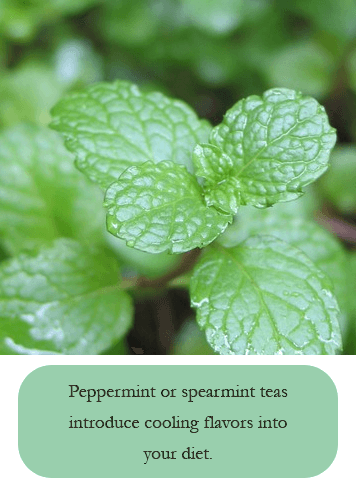
Vata imbalance may be the result of consuming too many bitter, astringent, or spicy foods. To counteract this, add sweet, sour, or salty flavors to your meals. Consume foods that are easy to digest, such as boiled or steamed starchy vegetables, ripe fruits, grains, and mild spices including thyme, parsley, fennel, salt, and black pepper. Drink teas that contain chamomile, ginger, or lemon. In general, Vata Ayurvedic body types should avoid dry fruit, certain raw vegetables, white potatoes, and bread with yeast.
Pitta Dosha Diet
Pitta imbalance might occur due to excess alcohol or consuming too many hot, spicy, fried, salty, or fermented foods. To rebalance, Pitta Ayurvedic body types should consider eating cool, heavy foods with sweet, bitter, and astringent tastes. These can include boiled, steamed, or raw vegetables, sweet fruits, and moderate amounts of dairy and grains such as rice, wheat, barley, and oats. Cook using mild, cool spices like coriander, cardamom, turmeric, cumin, and mint. Peppermint or spearmint teas are another way to introduce cooling flavors into your diet.
Kapha Dosha Diet
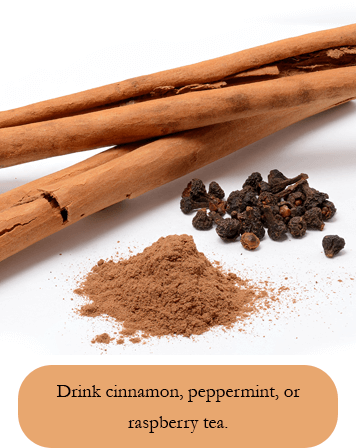
For Kapha Ayurvedic body types, feeling mentally and physically lethargic may be a sign of imbalance. Kapha imbalance may be the result of eating too much, which can be counteracted by following a light, low-fat diet consisting of warm foods with pungent, bitter, and astringent flavors. To regain balance, Kapha types should think about eating boiled, steamed, or raw vegetables, ripe fruits (except bananas), fat-free buttermilk, and grains such as corn, millet, rye, and barley. Eat foods with strong spices like pepper, paprika, salt, garlic, basil, cloves, mustard, ginger, and cardamom. Drink cinnamon, peppermint, or raspberry tea.
Using Essential Oils
Many of the herbs and spices recommended for your dosha type can also come in the form of essential oils. In fact, essential oils are the most potent, powerful version of a particular plant, fruit, or vegetable. Using these topically through hair and body care products can also help you rebalance your energy.
Yoga Styles For Each Dosha

In Ayurveda, there is a strong belief in the connection between mind, body, and spirit. Not only is it important to understand your Ayurvedic body type and maintain a balanced diet, it is also necessary to engage in some form of meditation or yoga practice. Once you know your dosha type, there are yoga exercises and poses you can do that are designed to restore balance, increase energy, or reduce stress.
Vata Yoga
Vata Ayurvedic body types might benefit from poses that make you feel both grounded and relaxed, as your dosha has a tendency to feel flighty, unfocused, or frazzled during periods of stress. Try poses like Vrksasana (Tree Pose), Tadasana (Mountain Pose) and the Warrior I and Warrior II poses. After a yoga class, use the My OM World Aromatic Body Mist to rehydrate and rejuvenate.
Pitta Yoga

Those who lean towards the Pitta Ayurvedic body type may need to practice poses that make them feel calm, as a way to cool down those hot and and fired-up feelings you’re prone to engage in. Avoid hot yoga classes or ones that make you sweat a lot, and try poses that open the chest (like the Pigeon and Bridge poses) and open the hips (like Tree, Warrior, and Half Moon poses). Following yoga, Pitta types can feel even more relaxed with our Chillax Muscle Recovery Gel.
Kapha Yoga
For Kapha types, yoga can be a way to feel energized and ward off those sluggish or tired feelings you’re more susceptible to. Try standing poses, which can be invigorating, and do yoga in the morning as a way to start your day. Instead of jumping in a hot shower, that may lower your energy levels once again, use the Shower Sheets as the perfect substitute after your morning session.
Learning Every Day

No matter how deep into the practice of Ayurveda you get, these methods and conditions are a way to better understand the mind-body connection and open yourself up to new ways of healing, improving your health, and feeling better overall. Knowing your Ayurvedic body type can enhance your yoga practice, encourage you to make changes in your diet, and give you an idea of what affects your moods, both positively and negatively. Using your dosha type as a framework for your health can ensure that you have more energy and feel great every day.
Stay tuned for the next part of our Guide to Ayurveda, coming soon!
 Loading... Please wait...
Loading... Please wait...
